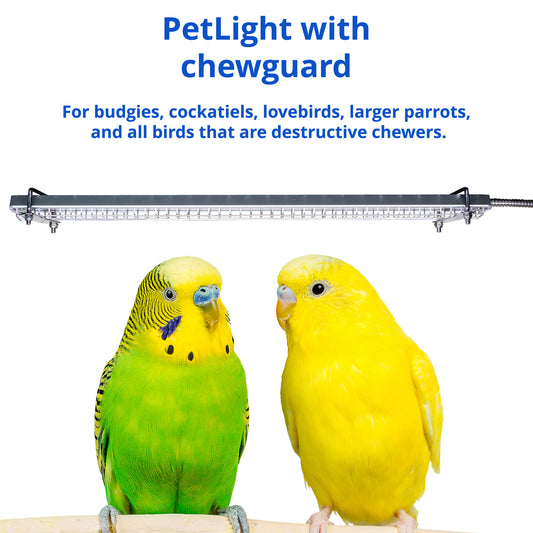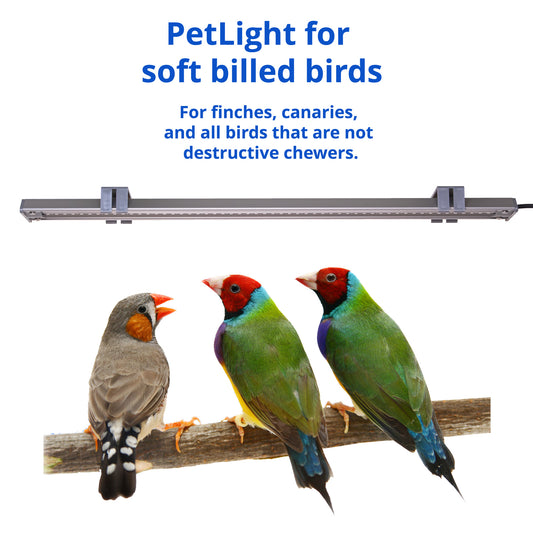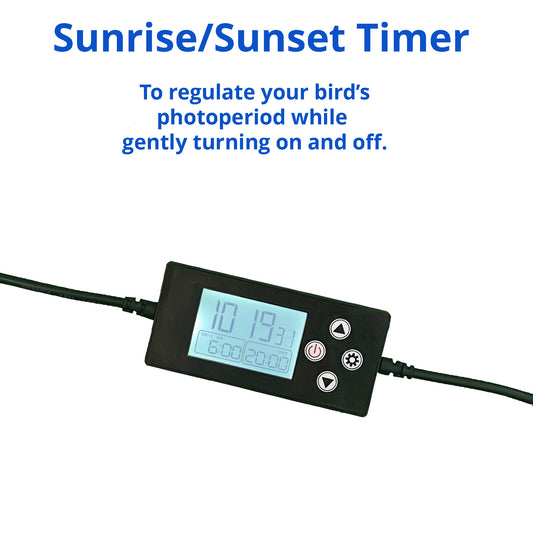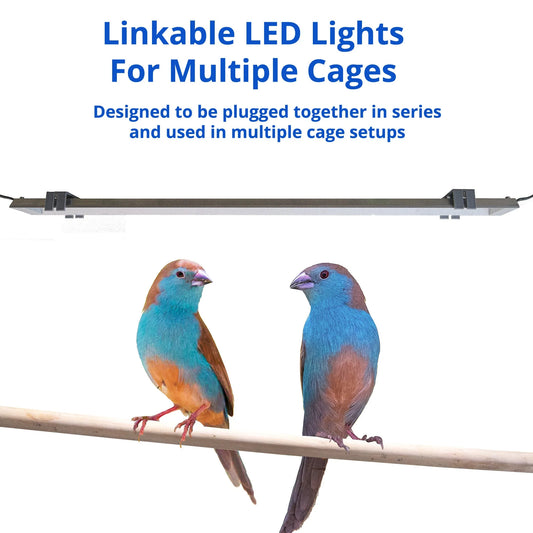Bird Cage Setup Checklist for First-Time Owners
Share

Getting your first bird is exciting — but also full of questions. How should you set up the cage? What’s essential, and what’s just nice to have? What actually helps your bird feel safe, curious, and happy?
This guide is your go-to checklist for setting up a bird cage from scratch. Whether you're adopting a budgie, cockatiel, or small parrot, you'll learn the essentials that build a safe, enriching space — and one often-overlooked addition that can make a big difference: proper lighting.
1. Proper Lighting: The Overlooked Essential
Most new owners forget: room light isn't enough for birds. While the room may look bright to you, birds experience light differently — especially inside a cage, where shadows reduce intensity.
Birds need:
10–12 hours of bright, stable light every day
A consistent day/night cycle (especially in winter)
Lighting positioned directly where they live — not just ambient light
💡 HappyBird lights are designed to mount directly to the cage, providing flicker-free, bird-safe light that mimics the clarity and consistency of natural daylight — without harmful UVB.
2. Cage Size Matters — Always Go Bigger Than You Think
Your bird needs space to stretch its wings, climb, and move around freely. A good cage supports both exercise and mental stimulation. Even for small species, a compact cage can become frustrating.
Pro tip: Prioritize width and depth over height. Birds move horizontally more than vertically.
3. Perches: Variety Is Key
Natural wood perches of varying thickness are important to prevent foot fatigue. Don’t rely only on smooth dowel rods. You can also include rope perches or textured branches (clean and bird-safe) to give your bird more grip options.
4. Food & Water Setup
Use stainless steel or BPA-free plastic bowls. Make sure they’re securely attached and placed away from perches to stay clean. Consider adding a cuttlebone or mineral block for additional nutrition.
5. Toys & Mental Stimulation
Boredom is a big issue for birds. Include chew toys, puzzle toys, and things they can manipulate. Rotate them weekly so your bird doesn’t lose interest.
6. Placement of the Cage in Your Home
Avoid drafts, direct midday sun, or areas with constant traffic. Place the cage at eye level in a calm, bright room where your bird can observe but not feel threatened.
7. Easy-to-Clean Surfaces
Use removable trays or newspaper lining for the bottom. Clean daily. This not only helps hygiene but also helps monitor droppings for any signs of imbalance (color/texture).
8. Sleep Support (Covers or Quiet Rooms)
Birds need predictable rest. Use a breathable cage cover or keep the room dark and quiet at night. This helps regulate behavior and supports their natural rhythm.
9. Daily Routine (Feeding & Play Times)
Try to feed and interact with your bird at similar times each day. Birds are creatures of habit and thrive on predictability — just like lighting.
10. Monitor & Adjust
Every bird is different. Observe your bird’s behavior and adjust accordingly — more toys, different perches, or fine-tuning your light placement can all make a big difference.
Conclusion
A well-set-up cage is more than a collection of parts — it’s a safe, structured space your bird can thrive in. And while food, perches, and toys are expected, many new owners overlook how crucial lighting is for rhythm, behavior, and comfort.
HappyBird lights offer a simple, bird-specific solution: safe, flicker-free, and bright enough to make your bird’s world feel alive — from day one.




